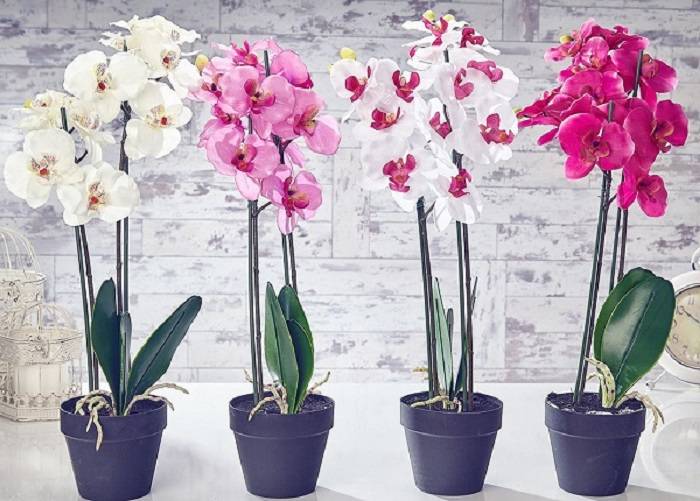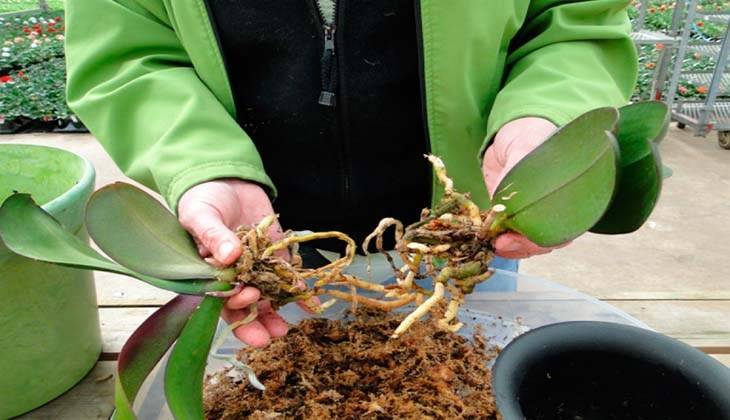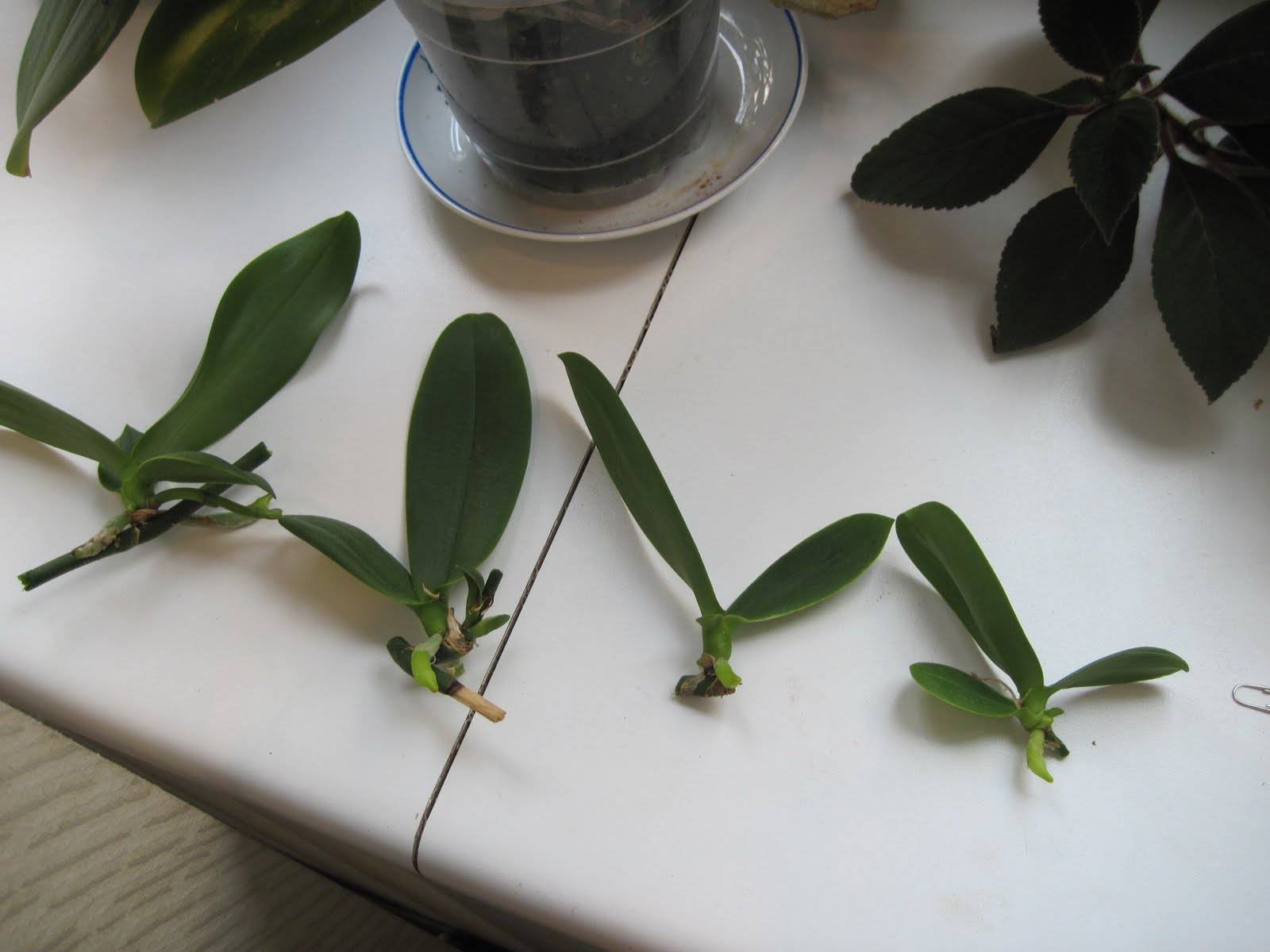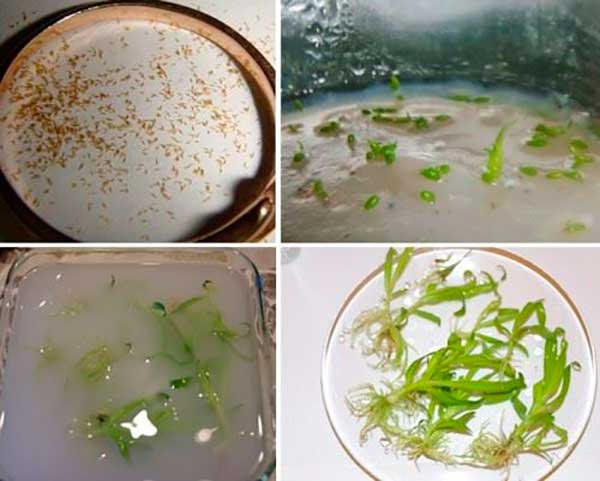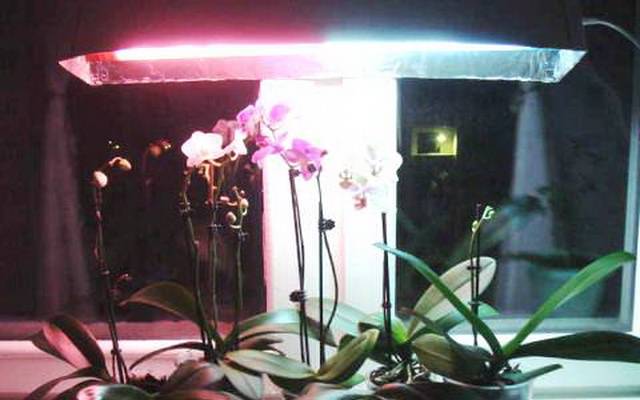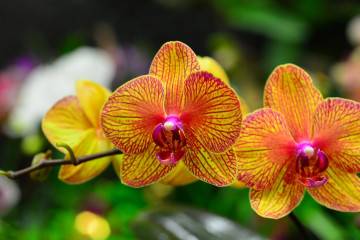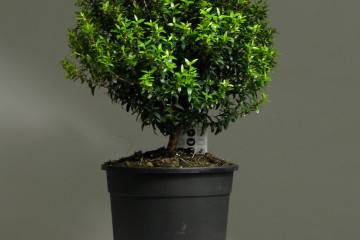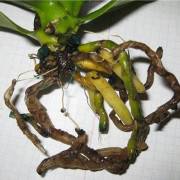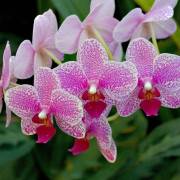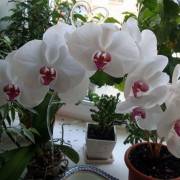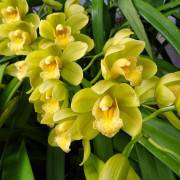How to propagate an orchid at home
Content:
There is an opinion that growing an orchid at home is quite troublesome. What can we say about reproduction? In fact, there is nothing complicated, you just need to follow some agrotechnical rules and be patient.
There are a huge number of orchid varieties; for breeding, the most simple species are considered to be with high ecological plasticity. These can be hybrid varieties of Phalaenopsis, Oncidium, Cattleya and many others.
When to breed
To get the result, you must follow a few rules. Reproduction of orchids at home should be carried out during the period when flowering ends. This will allow all the forces to be directed directly to reproduction. Compliance with the temperature regime is another factor, strict adherence to which affects a positive result. The temperature should be between 28-30 ° C. This is the optimal value, which cannot be deviated from.
For reproduction, you must choose flowers without signs of disease. If, upon visual inspection of the plant, spots, changes in the color of the leaves were found, then it is not recommended to propagate this specimen. It is worth waiting for the full recovery of the orchid.
Reproduction methods
Having decided in time, you need to decide how to propagate the orchid. There are several ways: by dividing the bush, by cuttings, breeding with air layers, by children, growing from seeds.
How to propagate an orchid at home using a variety of methods is described below.
By dividing the bush
How to plant an orchid by dividing a bush? Firstly, not all plant species are suitable for this method, only sympoidal ones. Simultaneously with the division, the main bush will have to be transplanted.
Step-by-step instruction:
- The soil is thoroughly moistened for painless extraction of the plant.
- The root system is cleared from the ground.
- The bush is divided with a sharp knife. The main bulb is divided into 2 or 3 parts. On each bush, you must leave 4 pseudobulbs.
- The resulting sections are processed with charcoal and dried a little.
- The resulting parts are planted in separate containers. The soil should be as light and nutritious as possible (for example, a mixture of moss and substrate).
For the best rooting, it is necessary to create conditions with high humidity.
Many growers, not wanting to spoil the appearance of the plant, carry out division at the moment when young shoots form a bulb, being in a dormant period. Upon completion, the process of root growth and active growth will begin.
By cuttings
Orchid propagation by cuttings is usually used for mnopoidal species. How to propagate an orchid by cuttings? The procedure must be carried out in the spring, so that the flower has time to strengthen over the summer.
The dilution sequence in this way is as follows:
- It is necessary to cut off the top of an adult stem with two air roots with a sharp knife.
- Be sure to treat the sections with fungicides. Further, a garden var is applied to the cut site.
- The resulting stalk must be rooted by planting it in moist moss in a container covered with foil or glass. It is imperative to create special conditions: it should be warm and light.
If the cutting is strong, rooting will take place faster and the sprout will not require additional care. To speed up the process, you can treat the kidneys with a special paste that contains growth hormones. The procedure is performed twice with a time interval of 14 days.
Air layering
Certain types of orchids that can be propagated at home using layering are sympodial varieties. How the orchid reproduces with the help of air layers is clear from the name itself. How to take a shoot from an orchid correctly?
For rooting, you need to choose a long stem or shoot on which leaves do not grow, bend it into a neighboring pot with nutritious soil. Moss moss is used as a substrate. For the best rooting, the branch should be in greenhouse conditions, the container must be covered with a bag or glass. In the greenhouse, it is required to carry out timely moistening and maintain a temperature of 25 ° C.
Rooting, layering, subject to all conditions, will occur in about 21 days. When young orchids with an already formed root system appear on the stems, you must carefully disconnect the shoots from the adult plant. In a young plant, the places of the cuts must be treated with ash.
Children
On an adult plant, the appearance of children is facilitated by the high temperature in the room (28 ° C) and high humidity. Under other conditions, children should not be expected.
It will take at least 6 months for a root system to appear on a baby. Only after the formation of strong roots can the lateral baby be cut off and planted. You can plant a baby only at the moment when it has 4 leaves and 5 full-fledged roots. You can divide the plant and the baby with a sharp knife, be sure to leave a small part of the peduncle and treat with ash the places of the cuts at the appendix and the mother bush.
In some species, lateral shoots are called babies. For their appearance and growth, it is necessary to use mineral fertilizers with a high content of potassium, phosphorus, nitrogen. It is possible to breed in this way only after the shoots grow a little. They will need to be cut off with a sharp knife, transplanted into a separate dish.
Growing from seeds
The most difficult and longest way to reproduce. To get a new plant from a seed, you need to carefully study this issue and create an almost sterile laboratory environment.
The seeds of this plant are very small. In order for them to germinate, it is necessary to create a nutrient medium. It is prepared using agar-agar, which must first be diluted in water. Sterilized seeds are placed in special tubes filled with a nutrient substrate. The temperature should be constantly at least 22 ° С, watering is not required, only spraying with warm water.
Care after landing
To grow a healthy orchid, you need to create the right conditions for keeping it. In nature, this plant grows in the sun, so it needs bright lighting at home. Lack of light can lead to discoloration of the leaves and even yellowing.
To create the most comfortable conditions, you need:
- the location of the plant only under diffused light;
- direct sunlight can greatly harm the orchid, cause burns;
- daylight hours 12 hours, in winter artificial lighting is required;
- temperature at least 18-25 ° С during the day, 15-20 ° С at night;
- the flower feels comfortable only with moderate watering, the water should be soft, for example, thawed;
- a prerequisite is feeding the orchid every 3 weeks. This is especially important in the phase of active growth.
Possible breeding errors
Very often, when breeding, especially novice growers make a lot of mistakes. You can propagate an orchid at home in the spring, when the plant has already woken up, or when the flowering has already ended. Mechanical damage to the roots during transplantation can lead to illness or even death of the orchid. The use of all kinds of stimulants during transplantation greatly reduces the immunity of the flower.
With the right approach to orchid propagation and good care of the young plant, the breeding process will turn into a very exciting experience. If all the requirements and rules are fully observed, in a very short time the orchid will give its first flowers.
